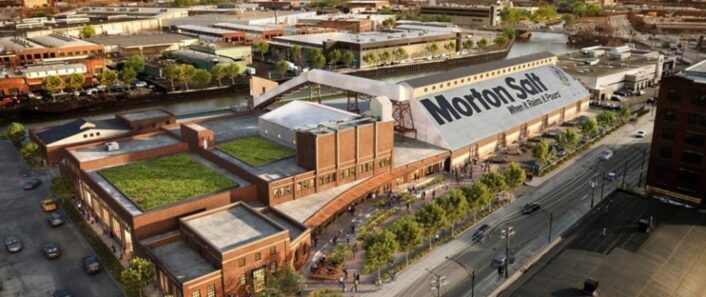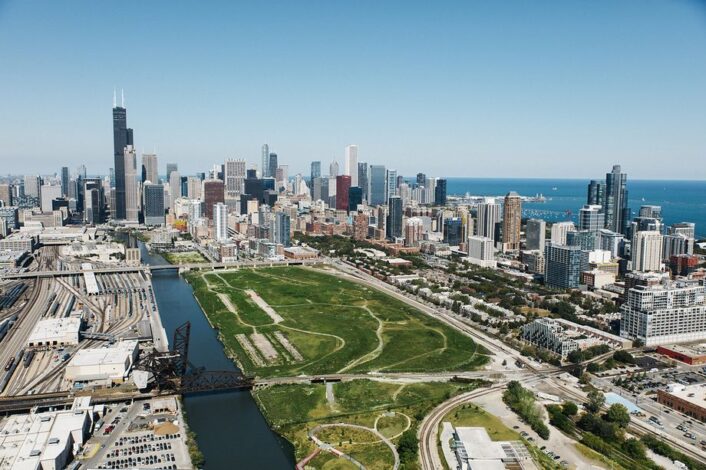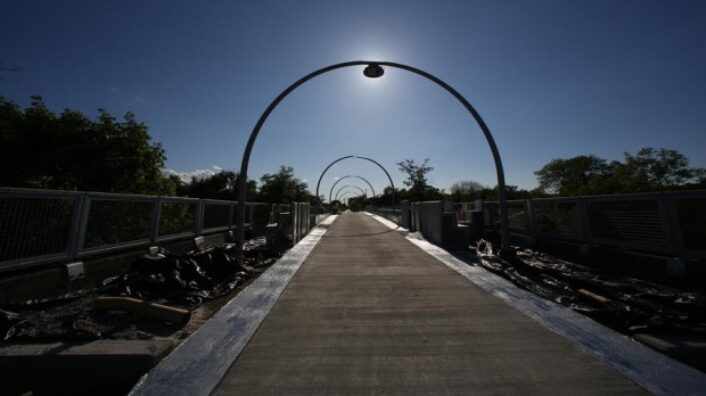Architecture
Chicago’s floating urban sanctuary- Wild Mile Chicago
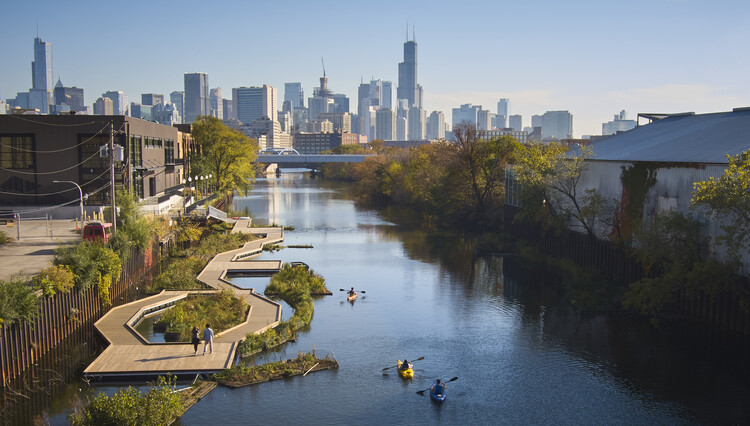
Kayaks and small boats enjoy the river.
Image courtesy of: Arch Daily, photographed by: Dave Burk
In 2016, a proposal was initiated to construct an eco-park along the Chicago River. Last year, the floating urban sanctuary opened to the public. Dubbed Wild Mile Chicago, the grassroots project is aimed at improving the ecological corridor by increasing biodiversity and creating an urban safe haven.
The winding wood walkway weaves in and out of a floating garden and wetlands on a newly reinvigorated section of the Chicago River. The 400-foot portion reintroduced flora and fauna to the previously industrialized stretch; Chicago’s impressive skyline lingers in the distance.
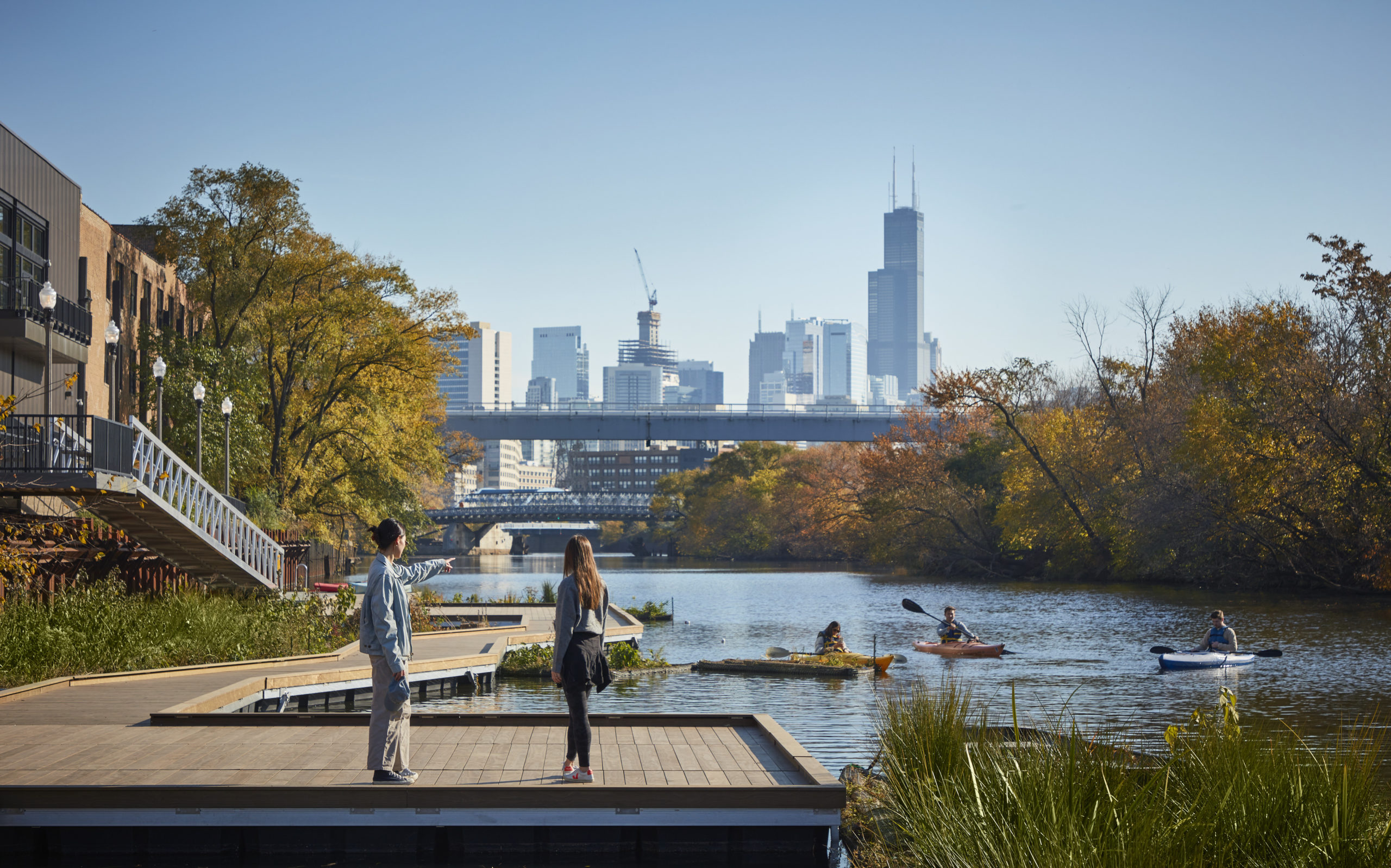
Doug Voigt, SOM’s Urban Design and Planning Partner said, “Our challenge is to create truly regenerative cities, designed to restore the natural environment in concert with urban development and growth.”
Image courtesy of: SOM
The project was realized by a local not-for-profit Urban Rivers, with the support of Skidmore, Owings & Merrill (SOM) and the City of Chicago. The trio collaborated with a number of community organizers to complete the project and national retailers such as Whole Foods and REI helped by remaining continuously involved.
It was imperative that the initiative take advantage of its proximity to the forty schools and academic institutions, specifically, several Chicago Public Schools and the British International School of Chicago. Providing educational and community programming was a big “selling point.” The volunteer-led and technology-driven River Rangers has been vital in recruiting “citizen scientists” to document the changes seen with regards to introducing plants and wildlife to the newly landscaped stretch.
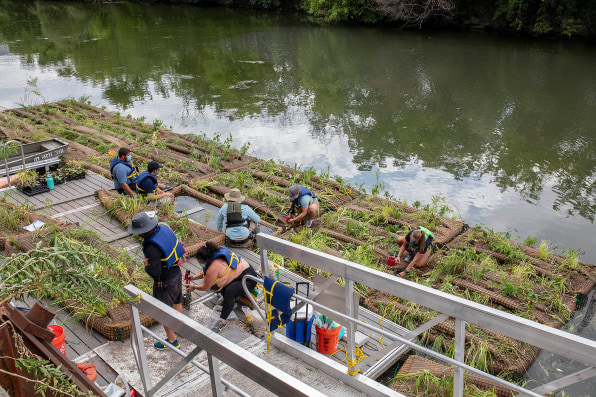
This part of the Chicago River is no longer lined with operational factories and full barges.
Image courtesy of: Fast Company
The teams’ landscaping plan addressed the (courtesy of Architectural Record) “industrial context with systems intended to emulate natural river ecologies. The designers anchored sand-filled trays to the river’s industrial-era-sheet-pile retaining walls (that had been long used to channelize the river) and sank logs to create ecosystems for transplanted organisms like mussels.”
The project was lucky to have two Chicago institutions, the Shedd Aquarium and the Chicago Botanic Garden, to assist. SOM and Urban Rivers coordinated with the Garden’s aquatic curator of vegetation was vital in deciding which flora to initially introduction. Furthermore, collaborating with the Shedd Aquarium enabled brainstorming into other potential opportunities such as kayak tours.
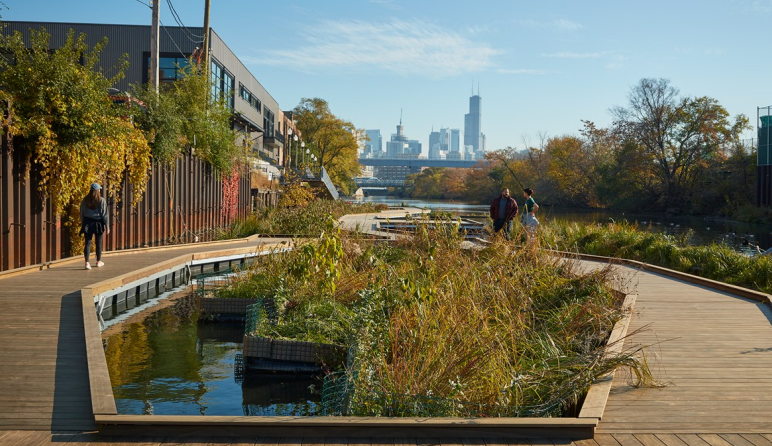
Floating gardens…
Image courtesy of: North Branch Works
The project was successful at reintroducing over sixty species of water-tolerant native plants to the area. As a result, new birds and other pollinators have made a home at Wild Mile. Specifically, the team “planted marsh blazing star (a monarch butterfly favorite), American water-willow for bees, buttonbush to nourish hummingbirds, sedges for nest-making, and pickerelweed (or white water lily), whose deep roots provide fish and turtle habitat.” Basically, the floating gardens are artificial wetlands where native plants are situated in the water in raft-like contraptions of water appropriate materials which provide the plants’ roots room to grow underneath.
The pathways were constructed from kebony-wood and supported by aluminum frames. The flexible framework will prove paramount in the future as Wild Mile is just the first phase of an ambitious project. The next phase calls for including a 400-foot-long waterfront green space to the north.
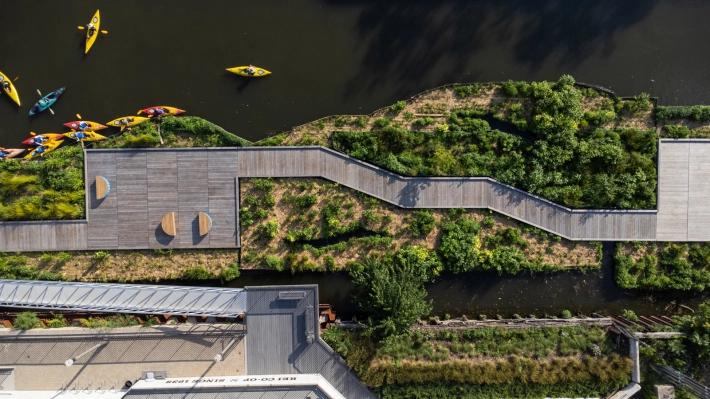
An aerial view of the project which officially opened in June, 2022.
Image courtesy of: Block Club Chicago, photographed by: Colin Boyle
Urban Rivers co-founders Nick Wesley, Zach Damato, and Josh Yellin had been dreaming of a way to clean up the Chicago River while providing a wildlife habitat for many years. The idea of floating wetlands seemed like a way to replicate the river’s standard edging. The trio thought it was strange that no one was jumping at this opportunity to address two key issues in Chicago: minimal open space within the city and improving existing habitats.
Wesley concedes, “We were like, if no one else is going to do it, we will. It doesn’t seem that hard, it just seems like someone’s got to focus on it for a while. So we expected we’ll submit a permit to the city, three months later we’ll get it, we’ll raise some money, and put it in.” The success in Chicago only means that the trio has momentum to implement this model in other global cities. Wesley adds, “Our vision is that other densely populated areas copy it, adapt it, and start to activate these underutilized sections of waterway.” We hope so too!
